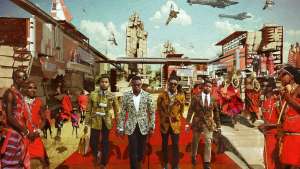From the Series
In his early days, Dutch designer Max Kisman was a pioneer of magazine design and an early adopter of digital technology. Since then, in a career that has spanned 38 years there have been few mediums that Kisman hasn’t had contact with. He has been highly decorated for his work in television, but is perhaps most widely known for his posters, which feature his instantly recognisable graphic style.
Since Kisman began his career in the 1970s, he’s had a fascination for typography. He has designed numerous font systems for Holland Fonts, FontShop International and Fuse, and co-founded TYP/Typografisch Papier, an alternative magazine on typography and art, in 1986.
Letter forms became his canvas to exploit graphic qualities such as composition, tension, contrast and form. He has developed his own highly graphic system of visual symbolism and iconography (for which he received a grant from the Netherlands Foundation for Visual Arts, Design and Architecture in 1989). Nowhere is these more apparent that in his ouevre of posters, where he mastered the art of subtracting
His aim is always to simplify and distill ideas down to their fundamentals in order to communicate most succinctly. Describing his illlustrations and drawings as “pictographic”, he looks for the most salient features of his subject, often picking out opposing or contrasting aspects for heightened effect. "I enjoy subtracting the noise from the unnecessary information to be as simple as possible," says the Amsterdam-based designer. "It's a hard process because you have to take things that are dear to you. You have to kill your darlings."
He likens the process to creating "visual headlines" similar to what a newspaper editor does. Both have to pick the most defined aspect of their subject and express it in a method that is brief, evocative and easily understandable.
It's worth it in the end, as the striking and iconic images on his posters affirm. "Whatever you have left is always stronger in its compactness, instead of showing everything you have."
We interviewed Kisman at AGI Open 2014 in São Paulo, the annual conference of Alliance Graphique Internationale (AGI) that brings together prominent graphic designers in the world. Founded in Switzerland in 1954, AGI's mission is to promote graphic design by means of talks, publications and educational activities.








